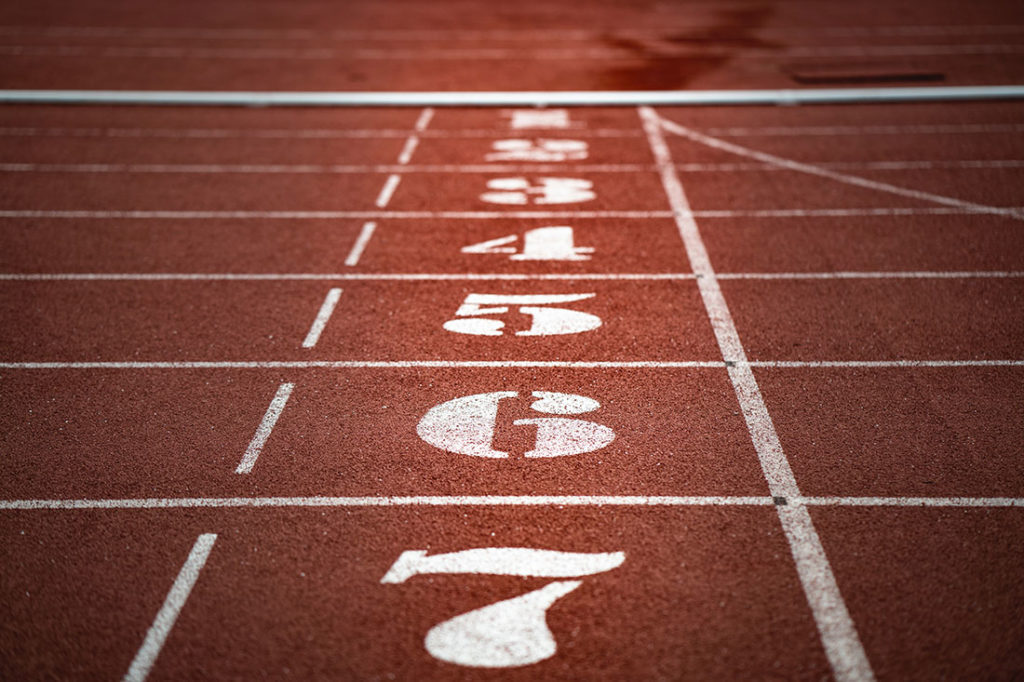This is the sixth and final installment in a series of stories tracking our writer Matt Crossman’s progress on improving his scores in the SAT for Sports. He began this project two months ago with a goal of becoming an average high school athlete at 48. Did he make it?
I climbed atop my stand-up paddleboard and faltered back and forth, before steadying myself by using the paddle to balance. The waves were almost nonexistent, so for the first 10 minutes, I didn’t fall. “You’re a natural,” the guide said, being nicer than he needed to be, and I knew better anyway.
After I spent a few minutes getting acclimated to standing on a fiberglass board, the guide suggested we head out of the little bay on the island of Hawaii and into the Pacific Ocean. “Maybe we’ll see whales,” he said.
Yeah, right, I thought. Tell me another one. I turned west to face the endless sea anyway. At that second, a whale jumped, rolled and made a huge splash. Then another and another. This was five days into a weeklong media trip to Hawaii, and seeing whales was one of the few things left on my to-do list. I hooted like … well, like someone who has never seen a whale before. Even my guide, who sees them often, smiled broadly.
We turned around to head back to shore, and my balance left me. I pitched forward, backward, sideways—splash, splash, splash. The guide, still trying to be nice, suggested the waves had picked up. Funny, those waves didn’t bother him. After I fell five times for no reason other than I lack balance, I was embarrassed.
It’s a feeling I’m used to.
In the last 18 months, in addition to stand-up paddleboarding, I tried, for the first time:
- Surfing
- Ice climbing
- Rock climbing
- Cross-country skiing
- Snowmobiling
- Snowboarding
- Sandboarding
- Fat-tire bike riding
- Long-distance bike riding
- Canyoneering
- Adventure racing (an eight-hour, 30-mile event comprising canoeing, road biking, trail running and mountain biking)
I call it The Year of Falling on My Face. I failed, to one degree or another, at almost all of them, and that was by design. I’m trying to learn to become more comfortable being uncomfortable.
I have never failed well. I get mad and stew. As a solopreneur, most of my failure happens in relative secrecy. I could hide it completely … except my reactions—anger, frustration, jealousy, regret—are obvious.
I’m trying to change. I want to fail better. Over and over again in The Year of Falling on My Face, I put myself in situations where I would fail often, and in front of people, to learn that failure is only the end if I let it be.
Which brings me to the last two months, which I spent training to try to become an average high school athlete at 48.
***
Mike Weinstein, owner of Zybek Sports, created the SAT for Sports—the 40-yard dash, standing broad jump, standing high jump and two agility drills—to measure athleticism, most often of high schoolers hoping to impress college coaches. Using Zybek’s data from testing 20,800 people last year, we created the statistical profile of an average high school athlete (defining “average” as broadly as possible to give me a chance) and I set about trying to match those scores.
I conceived training for the SAT for Sports as a healthy way to spend my quarantine time. I also saw it as a perfect end cap for The Year of Falling on My Face. I had never done any of the five tests, and it showed. I pulled my hamstring the first time I tried the 40-yard dash and couldn’t run for three weeks. I high-jumped as if the laws of gravity applied double to me. I looked like a drunken baby giraffe on ice skates in the agility drills. Working on the broad jump, I slipped and fell on my butt, which hurt but was also a nice change of pace.
Following a training regimen designed by the St. Louis franchise of D1, a nationwide network of gyms that also scored my tests, I gave myself six weeks to meet the benchmarks. Then I gave myself a few more weeks because of my hamstring injury. Then I extended the deadline because it rained a lot, because the sun was in my eyes, because of every reason I could think of to train a little more so I would fail a little less in the final exam, because as much as I want to fail better, I still don’t want to fail.
As the training went on, I got better, sometimes in sudden and big chunks, sometimes in small fits and starts. The keys to acing the SAT for Sports, I learned, are threefold:
- Get plenty of rest.
- Eat right.
- Be 25 years younger.
When I could delay it no longer, I took the SAT for Sports for the last time last week. I finally had the answer as to whether I could become an average high school athlete at 48.
***
As I’ve tried to learn to fail better, I’ve simultaneously experimented with a form of goal setting in which achieving the goal barely matters. I set “learn to ride a stand-up paddleboard” as a goal of my trip to Hawaii. I fell into the Pacific Ocean so many times it’s hard to say I met that goal. But if the price of falling on my face was HEY! LOOK! A WHALE! I can live with being such a bad paddleboarder I really shouldn’t call myself one. (I was an even worse snowboarder.)
Granted, “set goals in which achieving them barely matters” sucks as a philosophy around which to build a business that thrives financially. But it’s been great for pouring joy into my life, which happened with the SAT for Sports in ways I never could have predicted.
I can’t say with a straight face that I care about my scores beyond wanting them to be not pathetic. But I care deeply about the people who joined me in the training and the relationships we strengthened on the way.
A couple dozen friends agreed to train with me, both in person and from afar. I dubbed us Athletes for the SAT for Sports (ASS). We live on both coasts and in flyover country. We included a mechanic, an ag professor, a high-ranking sports executive, an attorney, a fellow journalist, a former Green Beret and more. For a while we even had a former professional athlete. He had to drop out, but he was only a pitcher, so he barely counts as an athlete anyway.
We encouraged each other and made fun of each other (which was often the same thing). We marveled at the three bald eagles that soared over several of our workouts. My friend John, a charter member of ASS, made a spreadsheet to chart our progress and the results were startling. My friend Micah began the training in good shape and yet improved his three-cone time by a full second, his 5-10-5 by eight-tenths of a second and his 40 by three-tenths.
After shelter in place regulations expired, I took my two daughters, 13 and 10, and two of their friends to a training session at their favorite park. They hadn’t seen each other since the quarantine began and they chattered endlessly in the two hours we spent together. As I warmed up, they played in the grass and climbed on a soccer goal like it was a jungle gym. They asked for permission to hug each other and were delighted when I granted it. It felt good to say yes. I ran slow but smiled wide.
Their dad is my friend Josh. He got furloughed shortly after the coronavirus shut down Missouri. When he called to tell me, I started to lament with him, but he cut me off. That wasn’t why he called. He said he wanted to use his downtime to get in shape and asked if he could show up at my next group workout. I was hugely impressed by that: Within hours of finding out he had abundant free time, he devised and acted on a plan to use it better himself.
For the next seven weeks, Josh showed up faithfully for workouts, sometimes with his 10-year-old son with him. After the final SAT for Sports test, I told Josh he looked great and asked how much weight he had lost. He said not much but that his wife loved the results. He smiled and gave me a look that needed no explanation.
The SAT for Sports yielded marital bliss, gawking at bald eagles, hugs between blissful girls and deepened bonds among friends. The joy of all that means the answer to the question that prompted it—can I become an average high school athlete at 48?—is almost superfluous.
Almost.
I’ve stalled long enough. The results are in.
So: Did I become an average high school athlete at 48?
The answer is: HEY! LOOK! A WHALE!
Final results:
| Event | Pass? | First | Last | Goal |
| 40 | YES | 6.14 | 5.935 | 5.95 |
| Broad jump | YES | 77 | 89 | 89 |
| High jump | No | 17 | 20.5 | 21.3 |
| 5-10-5 | No | 5.8 | 5.023 | 4.956 |
| Three-cone | No | 9.2 | 8.520 | 8.376 |
Photo by Adi Goldstein/Unsplash.com





